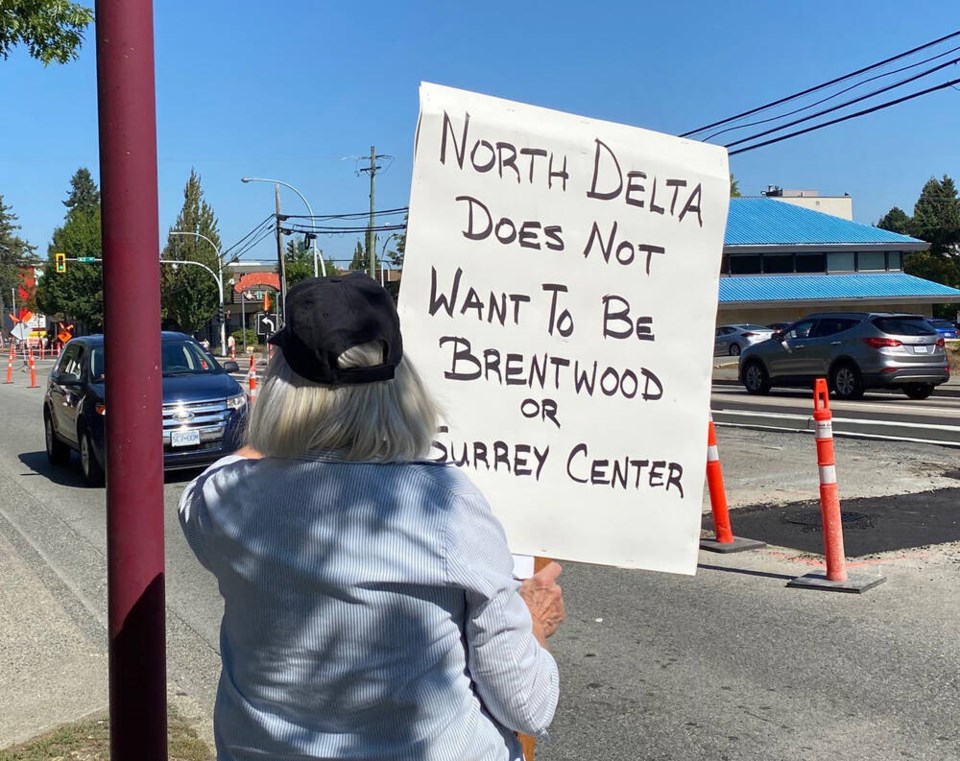Even more high-density development could be coming to Scott Road and other major Delta corridors.
A recent planning department report on the city’s evolving housing initiatives, as well as the provincially mandated housing target for Delta, notes that increased densities in town centres and major corridors will be explored for new policy changes.
Involving the adjustment of height and/or density allowances to accommodate more units in areas that are “well suited” for increased density, potential candidate areas include Scott Road as well as the Nordel Social Heart, Ladner Trunk Road, Tsawwassen Town Centre and 56 Street.
“In many cases, land use designations are currently constrained, resulting in challenges with development viability under the current economic climate and commensurate ‘spot’ applications for OCP amendments. This action would also include review of potential bonus density tools to achieve greater delivery of rental and below-market housing types in these areas,” the report notes.
As far as Scott Road, where a controversial major redevelopment of the Delta Shoppers Mall is currently proposed, the report notes that Metro Vancouver’s growth management framework offers the opportunity to designate a key transit corridor as a Frequent Transit Development Area (FTDA).
The designation is done through Delta’s Regional Context Statement, which is required to be updated by February 2025, two years after the adoption of the Metro 2050 Regional Growth Strategy.
“With the upcoming 2024 launch of the R6 Scott Road RapidBus, there is an opportunity to establish a new FTDA, providing a signal to the regional development community that the corridor is an area for transit-oriented densities, providing a geography for the use of planning tools such as reduced parking requirements or density bonusing, and making Delta eligible for increased Translink funding for pedestrian and cycling projects within the FTDA,” the report adds.
Meanwhile, the planning department notes that, based on updated OCP policies and designations to support housing, there is a need for further infrastructure planning and investment, including utilities and services like sanitary sewer, drinking water, transportation, parks, recreation facilities and amenities. Work is already underway to renew Delta’s development cost charges based on known development activity and infrastructure needs.
The provincial government last week announced it is introducing new housing legislation to deliver more small-scale, multi-unit housing.
The legislation will also speed up local housing development approvals, by shifting local planning and zoning processes to happen up front, according to the province, adding it will require municipalities to expedite and streamline permitting by updating community plans and zoning bylaws on a regular basis.
Delta’s planning department is planning an OCP review.
“Given the number of topics that would require OCP amendments, staff propose to seek efficiencies and an expedited process by preparing a concurrent, city-wide OCP update focused primarily on the housing actions, the report notes.


